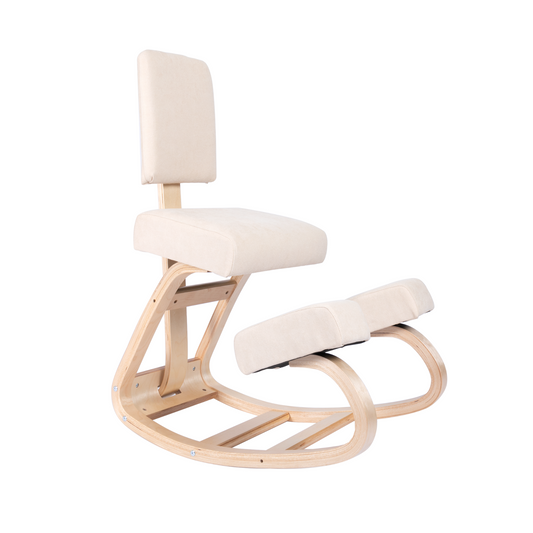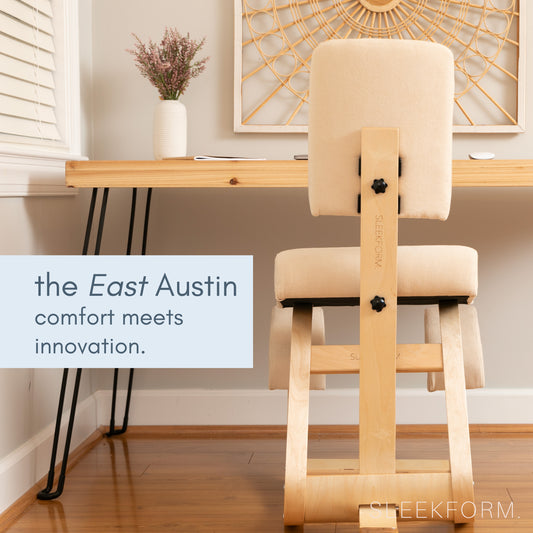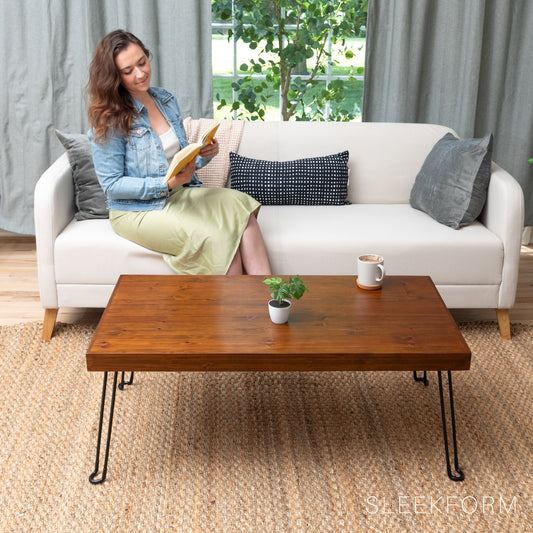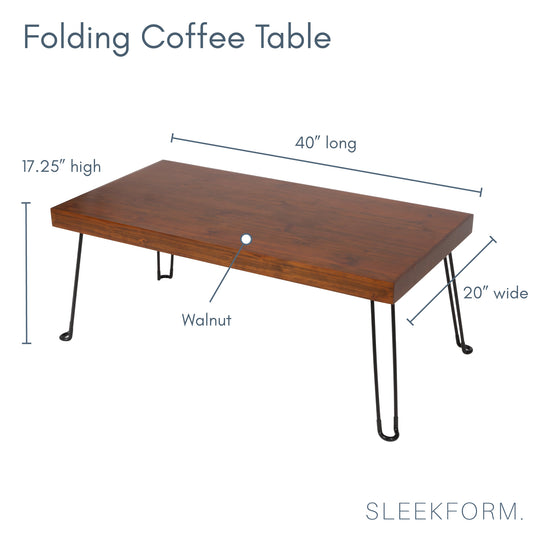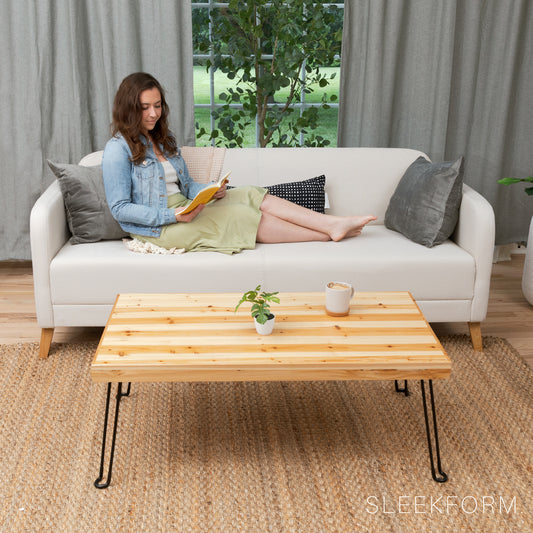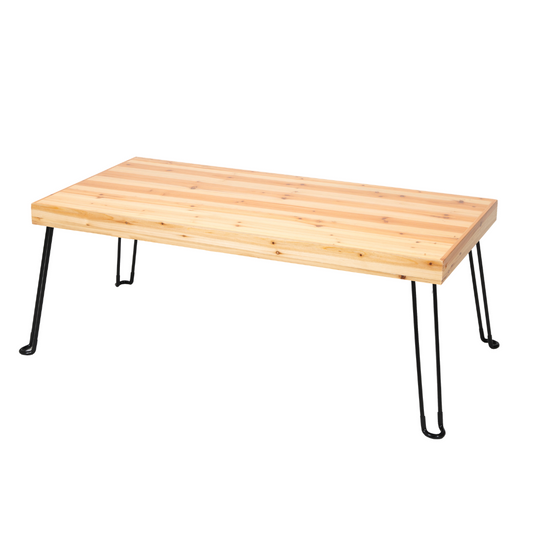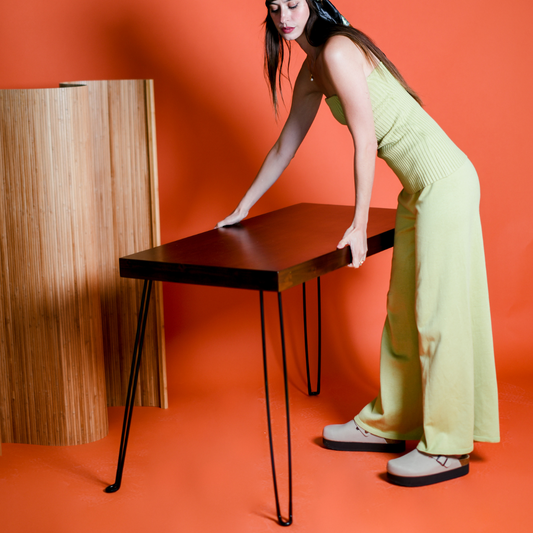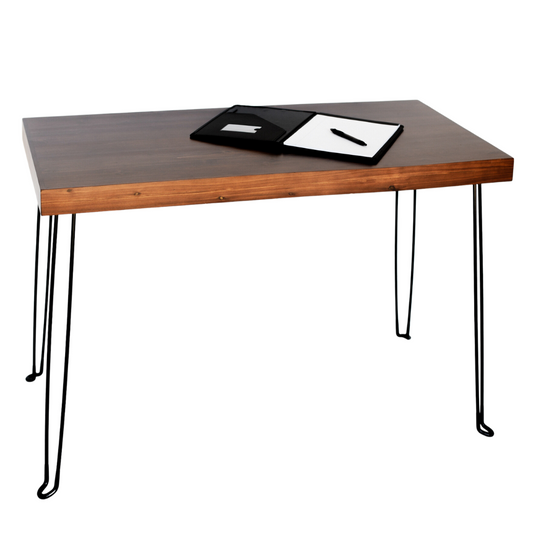So you have a desk, a chair, a laptop, monitor, keyboard, trackpad, lamp and maybe a plant. And you feel good about the thought you’ve put into your workspace, and you’re managing to keep the plant alive but even still you’re ending the day with stiffness and back pain.
That’s because chairs and desks aren’t one size fits all and sitting in a classic 90° angle chair isn’t all that good for you for long-term use.
So that’s why we’re here. Let me show you how to make your desk better suited to your specific body and how we can incorporate different styles of sitting and standing to help keep you active and pain-free throughout the day.
Let’s start with the basics.
Setting Up Your Workspace.
We believe “the next posture is the best posture” which is why we recommend switching between your regular chair, a kneeling chair and standing throughout the day.
No matter if you’re sitting, standing or kneeling, there are a few best practices you should always be following to help keep pain at bay.
- Your arms should be at a 90° angle while typing or using a mouse. This rule will help you find the right height for your chair or your standing desk (demonstrate the different heights the SJ can make a keyboard.
- Your computer monitor and/or laptop should always be at eye level to eliminate neck and shoulder pain. We recommend a laptop stand like this (shows roost stand) and for a monitor, you can always buy yourself a nice stand but a shoebox or a stack of books always works in a pinch.
- After raising your laptop you’ll need to make sure you have an external keyboard and mouse so you can still have your arms at a 90° angle.
Once your workspace is set up in a way that will actually serve your body, the next step is to make sure you move throughout the day.
Finding Opportunities To Move.
Yes, you can get up and stretch every 30-60 minutes and stretch is great but we like to mix it up even more and switch out the way we work every few hours.
Our favourite method is going from the kneeling chair to standing and that’s exactly why we created our Saint John Standing Desk Converter.

The Saint John has all the ergonomic benefits of a traditional standing desk but without the heavy frame. It’s a safe space-saving, back-saving desk converter that allows you to easily go from sitting to standing.
It works perfectly as a lap stand while you sit and transitions to a standing desk in seconds (show a visual of how this works).
Additional Posture Tips.
Now, even once you have all the right tools, you may still be experiencing some discomfort caused by some left over bad habits from before you had a perfect work set up like this. Here’s our best tips for unlearning some common bad posture habits:
- If you tend to stick your chin out, it can be tough to catch it in yourself. The best thing to do is to sit at your desk and place your thumb on your chin and your pinky on your chest (like you're holding a "phone"), and if they aren't aligned, make the change. Once you've balanced your head correctly, you'll be able to tell why you're sticking it out. Is it to look at your screen at an awkward angle? Is it because your chair is too far from your desk? A lot may become evident to you from this one teeny tiny adjustment.
- If you are the kind of person who experiences most of their discomfort in their upper back and neck, it's likely mostly rooted in your shoulder placement. If your keyboard or desk is too high or your screen is too low, or some terrible combination of the two, you're placing yourself in a very awkward position.
- Try sitting up straight at the edge of your seat with your feet firmly placed on the ground. Lift your hands over your head and drop them gently onto your lap without moving any other part of your body. This is your shoulders' natural position. As you get back to work, what you feel is pushing you out of this position? How can you make adjustments to fix it?
- It is essential for proper blood flow for you to be able to touch your feet flat to the floor. Not only does it prevent the onset of blood clots and other various health concerns, but it encourages active sitting. If you cannot reach the floor from your current chair, consider investing in a footrest for under your desk, or finding something in your house to prop yourself up with as long as it's not too high that you're suddenly in an awkward position a few books should do the trick again!
And the most important thing to remember is to GET UP! Take a walk around your space. Taking breaks is part of productivity!


